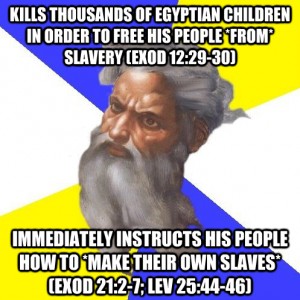Hi thanks for the reply.
I would disagree. The two names used to represent the one witness of God not the witnesses of men as private interpretation. are Moses to represent the letter of the law "death". and Elisa as the prophets to signify the unseen power of the law as the unseen law of faith . They work together to create one new perfect law.
Yes a lot of folks believe that Moses and Elias (I.E. the law and order) but there is no prophetic scripture pointing to them as being the two witnesses and no biblical proof they will be. Many folks believe that it will be Enoch and Elias because they didn't die and were taken up but here is a curve ball. There is no biblical record of the death of Ezra. He just disappears from scripture. But in the Apocryphal books still in the Catholic bible Esdras doesn't die either. He is taken up to heaven. I am not saying that I believe Ezra and Esdras ARE one and the same person, I am saying that I suspect that they are and that Ezra/Esdras might have also been taken up before death because there is no record of the death of Ezra in our Bible. Unless I simply missed the recorded event altogether several times and there is a record of the death of Ezra. ???
And this thing about two witness as actually being only one witness??? How can you say that when scripture is very clear about the fact that there will be two witnesses.
Rev 11:3 And I will give power unto my two witnesses, and they shall prophesy a thousand two hundred and threescore days, clothed in sackcloth.
Rev 11:4 These are the two olive trees, and the two candlesticks standing before the God of the earth.
Rev 11:5 And if any man will hurt them, fire proceedeth out of their mouth, and devoureth their enemies: and if any man will hurt them, he must in this manner be killed.
Rev 11:6 These have power to shut heaven, that it rain not in the days of their prophecy: and have power over waters to turn them to blood, and to smite the earth with all plagues, as often as they will.
Rev 11:7 And when they shall have finished their testimony, the beast that ascendeth out of the bottomless pit shall make war against them, and shall overcome them, and kill them.
Here is a little bit of what some research will tell you about Ezra and Esdras.
1 Esdras[edit]
1 Esdras, probably from the late 2nd/early 1st centuries BCE, preserves a
Greek text of Ezra and a part of Nehemiah distinctly different from that of Ezra–Nehemiah – in particular it eliminates Nehemiah from the story and gives some of his deeds to Ezra, as well as telling events in a different order. Scholars are divided on whether it is based on Ezra–Nehemiah, or reflects an earlier literary stage before the combination of Ezra and Nehemiah accounts.
Josephus[edit]
The first-century Jewish historian
Josephus deals with Ezra in his
Antiquities of the Jews. He uses the name Xerxes for Artaxerxes I reserving the name Artaxerxes for the later Artaxerxes II whom he identifies as the Ahasuerus of Esther, thus placing Ezra before the events of the book of Esther. Josephus's account of the deeds of Ezra derives entirely from
1 Esdras, which he cites as the 'Book of Ezra' in his numeration of the Hebrew bible. Contrariwise, Josephus does not appear to recognise Ezra-Nehemiah as a biblical book, does not quote from it, and relies entirely on other traditions in his account of the deeds of
Nehemiah.
The apocalyptic Ezra traditions[edit]
The
apocalyptic fourth book of Ezra (also sometimes called the 'second book of Esdras' or the 'third book of Esdras') was written c. CE 100, probably in
Hebrew-Aramaic, but now survives in Latin, Slavonic and Ethiopic. It was one of the most important sources for
Jewish theology at the end of the 1st century.[
citation needed] In this book, Ezra has a seven part prophetic revelation, converses with an
angel of God three times and has four visions. Ezra, thirty years into the Babylonian Exile (4 Ezra 3:1 / 2 Esdras 1:1), recounts the
siege of Jerusalem and the destruction of
Solomon's Temple.
[5] This would place these revelations in the year 557 BCE, a full century before the date given in the canonical Ezra. The central theological themes are "the question of theodicy, God's justness in the face of the triumph of the heathens over the pious, the course of world history in terms of the teaching of the four kingdoms,
[11] the function of the law, the eschatological judgment, the appearance on Earth of the heavenly Jerusalem, the
Messianic Period, at the end of which the
Messiah will die,
[12] the end of this world and the coming of the next, and
the Last Judgment."
[5] Ezra restores the law that was destroyed with the burning of the
Temple in Jerusalem. He dictates 24 books for the public (i.e. the Hebrew Bible) and another 70 for the wise alone (70 unnamed revelatory works).
[13] At the end, he is taken up to
heaven like Enoch and
Elijah.
[5] Ezra is seen as a new Moses in this book.
[5]
There is also another work, thought to be influenced by this one, known as the
Greek Apocalypse of Ezra.
1





